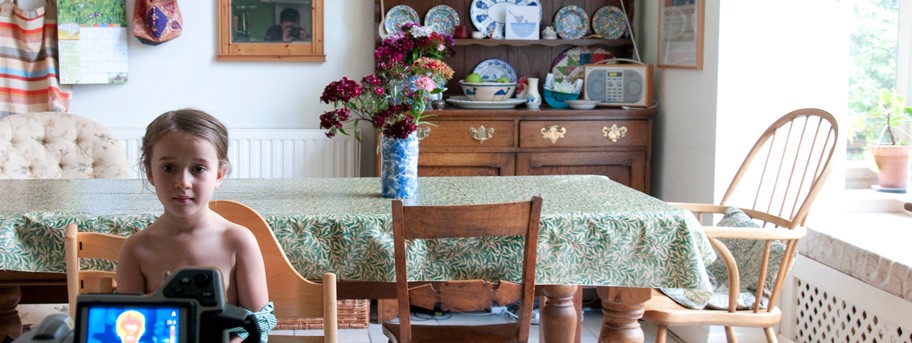The University of Nottingham
 Exchange online
Exchange online
Research Exchange
Scientists at the University believe they’ve found a way of fighting obesity — with a pioneering technique which uses thermal imaging. This heat-seeking technology is being used to trace our reserves of brown fat — the body’s ‘good fat’ — which plays a key role in how quickly our body can burn calories as energy.
This special tissue known as Brown Adipose Tissue, or brown fat, produces 300 times more heat than any other tissue in the body. Potentially the more brown fat we have the less likely we are to lay down excess energy or food as white fat.
Michael Symonds, Professor of Developmental Physiology in the School of Clinical Sciences, led a team of scientists and doctors at the University who have pioneered the thermal imaging process so we can assess how much brown fat we’ve got and how much heat it is producing. Their research has just been published in the Journal of Pediatrics.
The University’s Early Life Nutrition Research Unit is at the forefront of ground-breaking international research into managing brown adipose tissue using nutrition, exercise, and environmental and therapeutic interventions.
Thermogenic index for food labels
Professor Symonds said: “Potentially the more brown fat you have or the more active your brown fat is you produce more heat and as a result you might be less likely to lay down excess energy or food as white fat.
“This completely non-invasive technique could play a crucial role in our fight against obesity. Potentially we could add a thermogenic index to food labels to show whether that product would increase or decrease heat production within brown fat. In other words whether it would speed up or slow down the amount of calories we burn.”
The obesity threat
Obesity is one of the biggest challenges we face in Europe and America as our children grow older. It affects 155 million children worldwide. In the UK the number of overweight children doubled in the 1990s.
Dr Helen Budge, Clinical Associate Professor and Reader in Neonatology, said: “Babies have a larger amount of brown fat which they use up to keep warm soon after birth making our study’s finding that this healthy fat can also generate heat in childhood and adolescence very exciting.”
Professor Symonds and his team say their ground-breaking research could lead to a better understanding of how brown fat balances the energy from the food we eat with the energy our bodies actually use up.
Professor Symonds, together with Dr Budge and their team from the University’s School of Clinical Sciences has shown that the neck region in healthy children produces heat. With the help of local school children they found that this region, which is known to contain brown adipose tissue, rapidly switches on to produce heat. This capacity is much greater in young children compared with adolescents and adults. The researchers are now using their findings to explore interventions designed to promote energy use as heat and, thus, prevent excess weight gain in both children and adults.
Non-invasive technology
Professor Symonds said: “Using our imaging technique we can locate brown fat and assess its capacity to produce heat. It avoids harmful techniques which use radiation and enables detailed studies with larger groups of people. This may provide new insights into the role of brown fat in how we balance energy from the food we eat, with the energy our bodies use up.
This research goes to the heart of the University’s biggest ever fund raising appeal, Impact: The Nottingham Campaign, which is supporting lifelong health for children. Additional funding will allow more innovative approaches to be researched, developed and introduced across the globe. Find out more about our research and how you can support us at http://tiny.cc/UoNImpact.
Tags: brown adipose tissue, Early Life Nutrition Research Unit, Impact: The Nottingham Campaign, School of Clinical Sciences, thermal imaging
Leave a Reply
Other

Top prize for quantum physicist
A University of Nottingham physicist has won a prestigious medal from the Institute of Physics for […]

Zero carbon HOUSE designed and built by students comes home
Design and construct a low cost, zero carbon, family starter home, transport it to Spain, build […]
